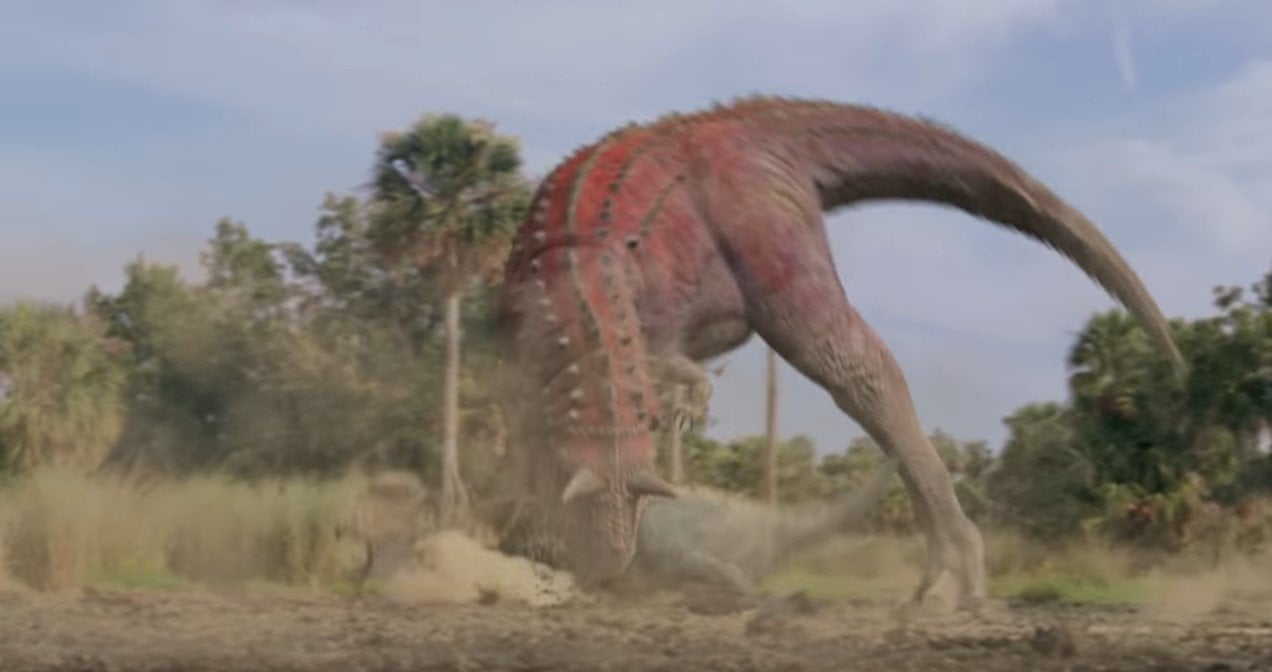Scientists studied how predatory dinosaurs hunted, what biting techniques they used and other eating habits in a recent study. Even though the largest land animals went extinct more than 65 million years ago, scientists are still trying to understand why some dinosaurs only ate plants while the famous Tyrannosaurus rex fed on smaller animals.
Scientists already know that dinosaurs show huge diversity. Also, that same diversity could have encouraged strong competition for the meat-eating dinosaurs that roamed on land at their time. Scientists, this time, decided to study the teeth of Coelurosaurian dinosaurs or bird-like dinosaurs that lived during the Upper Cretaceous period that lasted between 100.5 and 66 million years ago to try to understand how predatory dinosaurs hunted other animals. The team published their findings in the journal Current Biology on April 26.
“All these dinosaurs were living at the same time and place, so it is important to know if they were competing for food resources or if they were aiming for different prey,” Angelica Torices of Universidad de La Rioja, Spain, said in a statement.
The original purpose of the research team was to match the tooth remains with the dinosaurs of the respective species. However, they became more curious about how dinosaurs used their teeth for hunting. Working in collaboration with her colleagues from the University, Torices studied different bird-like theropods that were living in the area of today’s Spain and Canada. The team noticed small patterns of small scratches located on the blade-like teeth, suggesting that animals had similar hunting methods, although there was a difference in their targets.
The analysis revealed that the animals would first bite the target and then pull its head backward while the jaws were closed. Parallel scratches were seen for when they bit down on their prey, and oblique scratches as the head was pulled back. The team also uncovered that they found that the different tooth shapes worked differently with various biting angles.
Torices’ theory suggests that “in general, predatory coelurosaurian dinosaurs bite in the same way through a puncture-and-pull system, but troodontids and dromaeosaurids may have preferred different prey.” The researcher added that the coelurosaurian dinosaurs implied lower bite forces while hunting for smaller or immobile animals, while the latter dinosaurs had teeth that were less likely to fail at different angles which allowed them to attack larger prey that might also try to defend themselves while struggling against being killed. Also, they would consume bone pieces as a part of their meal after hunting.
In the future, the group is planning to study jaw and teeth models in detail so that they can learn more about the biting techniques and how predatory dinosaurs hunted their prey.
“Through this work we [can] begin to understand the interactions between these predatory dinosaurs in the ecosystem a bit better,” the researcher said.
Their biting style and eating habits could as well provide more info about their lives and maybe reveal something about other species. A few weeks ago, a different study revealed that the plant-eating dinosaurs were nearing the end of their days before the actual asteroid impact with our planet, as a result of eating toxic flowers.





